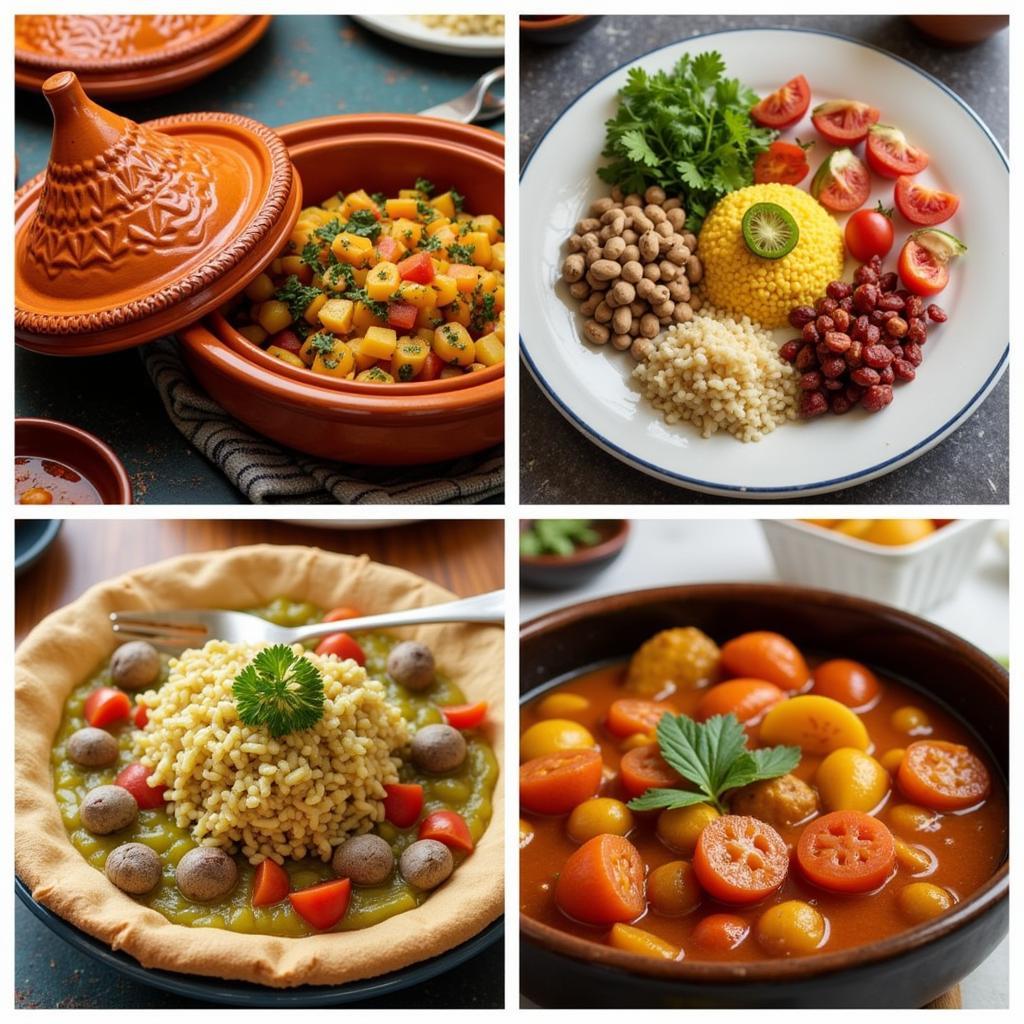Mediterranean and Middle Eastern cuisines often get lumped together, but while they share some overlapping ingredients and flavors, they are distinct culinary traditions. Understanding these differences enhances your appreciation for the rich tapestry of flavors each region offers. Let’s dive into the heart of this delicious debate.
middle eastern food vs mediterranean
Geography and Influence: Defining the Culinary Boundaries
The Mediterranean diet, as its name suggests, encompasses the culinary traditions of countries bordering the Mediterranean Sea, including Italy, Greece, Spain, and parts of North Africa. This region’s climate fosters the growth of olives, grapes, and a variety of fresh vegetables. Middle Eastern cuisine, on the other hand, stretches further inland, encompassing countries like Lebanon, Syria, Iran, and Iraq. The drier climate leads to a greater reliance on grains, legumes, and preserved foods. Historical influences also play a crucial role. The spice trade heavily impacted Middle Eastern cuisine, introducing exotic flavors from the East.
Key Ingredients: A Tale of Two Pantries
While both cuisines feature fresh produce, olive oil, and legumes, their pantries diverge in some key areas. Mediterranean cuisine emphasizes fresh herbs like oregano, basil, and rosemary. Lemon is a ubiquitous ingredient, adding brightness to dishes. Seafood plays a significant role, especially in coastal regions. Middle Eastern cuisine, in contrast, is characterized by the use of warm spices like cumin, coriander, and cinnamon. Dried fruits and nuts, like dates, apricots, and pistachios, are common additions. Lamb and chicken are favored proteins.
Signature Dishes: A Culinary Journey Through the Regions
Mediterranean cuisine boasts iconic dishes like Greek salad, pasta with pesto, Spanish paella, and Moroccan tagine. These dishes highlight the region’s focus on fresh, simple flavors. Middle Eastern cuisine offers equally compelling dishes, such as hummus, falafel, shawarma, and biryani. These dishes showcase the region’s expertise in blending complex spices and textures. Imagine biting into a crispy falafel, the flavors of chickpeas, herbs, and spices exploding in your mouth, or savoring a bowl of creamy hummus drizzled with olive oil.
What are the main differences between Mediterranean and Middle Eastern food?
The main differences lie in the predominant spices and herbs. Mediterranean cuisine favors fresh herbs like oregano and basil, while Middle Eastern cuisine utilizes warm spices like cumin and coriander. Another key difference is the prominence of seafood in Mediterranean cooking, contrasted with the greater use of lamb and chicken in Middle Eastern dishes.
middle eastern food vs mediterranean
Is Middle Eastern food healthy?
Like Mediterranean cuisine, Middle Eastern food can be very healthy. The emphasis on whole grains, legumes, vegetables, and lean proteins aligns with many principles of healthy eating.
Exploring Regional Variations within Middle Eastern Cuisine
Even within Middle Eastern cuisine, significant regional variations exist. For example, Lebanese cuisine often features lighter, brighter flavors, while Moroccan cuisine incorporates more sweet and savory combinations, influenced by its North African location.
 Regional Variations in Middle Eastern Cuisine
Regional Variations in Middle Eastern Cuisine
Is Mediterranean food considered Middle Eastern?
While they share some common ground, Mediterranean food is not considered Middle Eastern. Mediterranean cuisine encompasses the culinary traditions of countries bordering the Mediterranean Sea, while Middle Eastern cuisine refers to the countries further inland.
middle eastern food vs mediterranean
What makes Mediterranean food unique?
The emphasis on fresh ingredients, olive oil, and simple preparations gives Mediterranean food its unique character. The use of fresh herbs and the prominence of seafood also contribute to its distinctive flavor profile.
Which cuisine uses more spices, Mediterranean or Middle Eastern?
Middle Eastern cuisine typically uses a wider range of spices, often in more complex combinations, compared to Mediterranean cuisine, which tends to favor simpler preparations and fresh herbs.
A Culinary Expert Weighs In
Chef Nadia El-Khoury, renowned for her expertise in Middle Eastern cuisine, shares her perspective: “The beauty of Middle Eastern food lies in its ability to tell stories through spices. Each spice has a history, a journey, and adds a layer of depth to the final dish.”
Dr. Alessandro Rossi, a specialist in Mediterranean nutrition, adds: “The Mediterranean diet is more than just a way of eating; it’s a lifestyle. It’s about savoring fresh, seasonal ingredients and enjoying meals with family and friends.”
Conclusion: Celebrating Culinary Diversity
Both Mediterranean and Middle Eastern cuisines offer a wealth of delicious and healthy options. Understanding their unique characteristics allows us to appreciate their distinct culinary identities. So, the next time you’re craving flavorful food, embrace the diversity and explore the nuances of Mediterranean and Middle Eastern cuisine.
FAQ
- What are some common ingredients in both cuisines?
- What are some key differences in cooking techniques?
- Which cuisine is spicier?
- Are there vegetarian options in both cuisines?
- Where can I find authentic recipes for both cuisines?
- What are some popular street food dishes in each region?
- What are some health benefits associated with each diet?
Need support? Contact us 24/7 at Phone: 02437655121, Email: minacones@gmail.com or visit us at 3PGH+8R9, ĐT70A, thôn Trung, Bắc Từ Liêm, Hà Nội, Việt Nam.